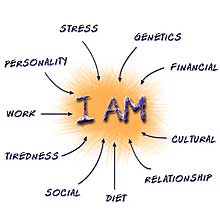
All of us, and all patients with diseases, are WHOLES. We were born as wholes. We live as wholes. That’s where we start and stay. The body AND all those aspects of us that we call mind, relational, emotional, subjective, spirit, and personal story, are always already together.
In most modern healthcare, mind and body are treated as separate compartments. Other aspects of our humanity are neglected. For the most part modern medical healthcare treats mind and body as separate compartments. The body is privileged and other aspects of our humanity such as mind, emotions, relationships, soul, and spirit are neglected. In contrast we see patients with disease as wholes, from the beginning of care, which leads to a WHOLE PERSON TREATMENT APPROACH. Some people ask whether we are saying their disease or everybody’s disease is psychosomatic. We don’t ever use that language because when you think of people as wholes you don’t divide them into two: those that have psychosomatic disorders and those who have purely physical disorders. When we think about wholes we think of all possible factors playing a role and we respond to whichever factors need the most input.

The story is what has happened in a person’s life experience and circumstances leading up to and through the illness. Sometimes it is obvious, sometimes it is hard to access. It may be a combination of old history and recent events. The story is unique in everybody. The Story approach is based on a person-to-person relationship of trust between patient and clinician. In a typical medical encounter, your clinician has a set of patterns in his/her head and is looking for a diagnosis. We do that too. But more than that we ask about what has been happening in the person’s life.
Every one of us is in relationships with others and the world and our stories are largely made up from those relationships and experiences……want to know more?
Buy Meaning-Full Disease on Amazon
n many cases this can greatly assist treatment and care. And mobilise the person’s own power for healing. How can this be? If we see a person as a whole, and that there is no hard boundary between our physical reality and our experience, then it makes no sense to say that a physical disease is only caused by purely physical factors. Most illnesses are due to a combination of factors. Lots of people hold private awareness of a feeling that their illness is somehow connected to what has happened in their lives. We have developed an approach that honours both the physical and non-physical elements.
Buy Somatic illness and the Patient’s Other Story on Amazon

And both happen together from the beginning. This is very unusual in modern healthcare. We do not divide the person. We are open to help the person address any of the factors that are or may be contributing to the illness. Of course, if the best treatment is to do something very physical like surgical removal of a tumour there is no hesitation. If illnesses are due to one factor then that should be addressed, whether it be physical or non-physical. If the illness is due to several contributing factors then it may be possible to address it from several directions. The big difference in our approach is that we are open to both the usual very physical approaches and a story approach that allows us to consider the whole.
Buy Somatic illness and the Patient’s Other Story on Amazon
And should be talking with and behaving towards them as wholes. This is not simply about sending patients from one clinician or specialty to another. One of the ways clinicians try to get other points of view on an illness is to send the patient around a number of specialties. In this way the patient can feel very divided, especially when there is poor communication between the clinicians. It frequently results in the focus being the clinician’s specialty and methods rather than the whole person.

They may not be able to take it very far but they can give a patient a start. No clinician can be whole person-oriented if he or she remains committed to a view that sees people as divided. And certainly clinicians must learn to be open and ready to listen to things they would normally avoid or exclude from consultations.